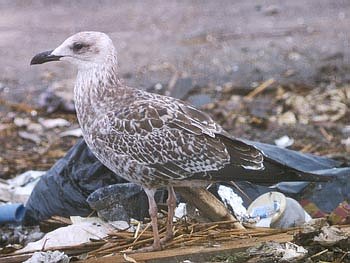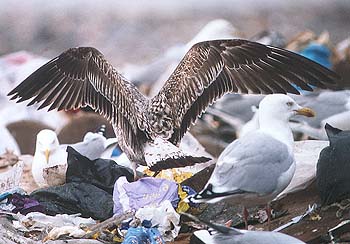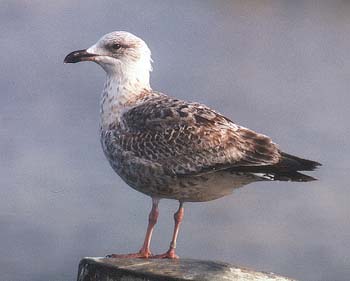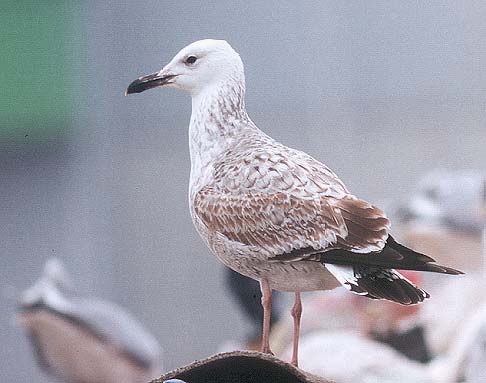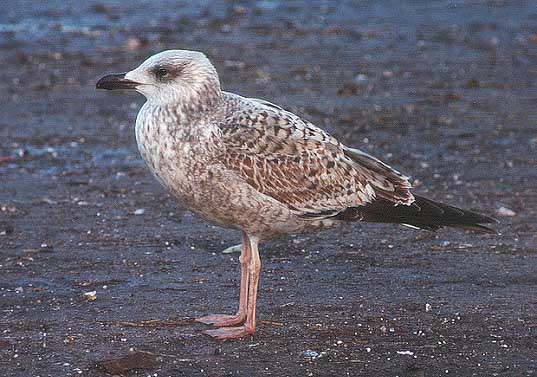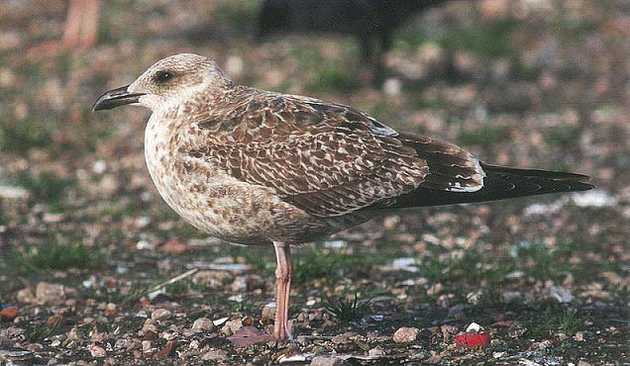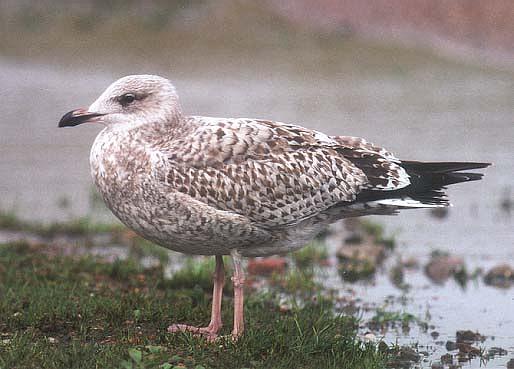Yellow-legged Gull Juvenile moulting to first winter. 2 September. Note the firm blunt-tipped bill, large 'deep' head, full body, long legs and wings. The tertials are dark-brown with a small pale edge. The same pattern is visible in the lesser and median wingcoverts. The greater wingcoverts normally show a chequered pattern which becomes fainter/darker towards the outer ones. The head is pale with a faint darker mask around the eye. Click in the picture for more pictures and info
Caspian Gull Juvenile moulting to first winter. 2 September. Compared to the YLG it is much smaller headed and the bill is more narrow and fine-tipped. The body is more elongated with long wings and a high breast (as if it is holding its breath). The legs normally look longer and thinner than in YLG. The tertials are dark brown with a rather broad pale edge. The wingcoverts look dull-brown with a small paler edge. The greater coverts are dull brown wit a paler tip, forming a pale wingbar. Click in the picture for more pictures and info
